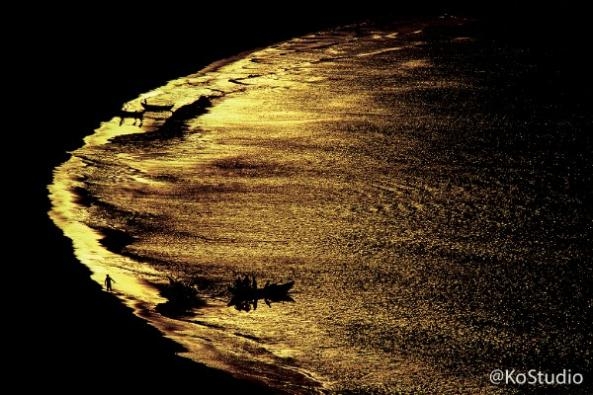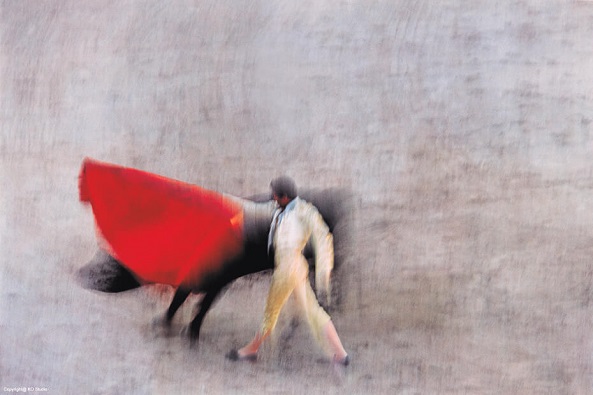The Mindscapes of Ko Si-chi
Ko Si-chi has been called Taiwan's first modern photographer. His unique "mindscapes" employed precise techniques and aesthetics to communicate poetic sentiments with the essence of painting, earning him an irreplaceable position in the photography world.
There are many different interpretations of his "mindscape" method. To put it simply, he strove to capture everyday scenes through a photographer's subjective emotions, rendering the photographed scenes and objects more than simply external forms. Unlike most photography, which simply records scenes and objects as they are, mindscapes are simple, but create emotional exchanges with their viewers, even acting as timelines that extend out and connect past, present, and future.
The following are considered Ko's masterworks and serve as an excellent introduction to his mindscapes.

("Golden Sea," 1988, Fujian)
"Golden Sea" is a piece that will inevitably come up when talking about Ko Si-chi. In 1988, he and poet Cheng Chou-yu visited the coastal Chinese province Fujian, and one evening after a few drinks, Ko headed up a hill on his own to shoot the moon. He lingered until early morning, when the sunlight began to shimmer on the sea, the black and gold intermingling and creating a beautiful arc along the shoreline as the foamy waves rolled in. Several fishing boats were moored on the shore, further adding to the sense of beauty and mystery of the piece. "Golden Sea" was featured in a United Nations calendar for 1994.

("Olay! Antonio," 1979, Spain)
"Olay! Antonio" was taken when Ko was watching bullfighting. The atmosphere was electric, and Ko was so excited that his hands shook as he hit the shutter button, unexpectedly creating a shot that felt like an oil painting. As Ko himself once said, "the painting-ness of my pieces is strong, and the colors are essential." His works also showcase an artistic technique he commonly used, the dye transfer process. This process creates rich, sharp colors and a photograph that can last for 300 years without fading. Ko spent ten years in New York looking for the right person to develop the photograph, a testament to his commitment to the work.
The dye transfer process is quite difficult and requires a complicated assembly color print process, one of the most advanced color processing techniques in the world. A single photograph can take days and cost thousands of dollars. However, this is a nearly lost artistic technique, as in 1994, Kodak announced that they would stop producing the materials required, meaning only a few companies are left that do make them.

("Presence of Venus," 1979, Greece)
"Presence of Venus" was given its name by poet Cheng Chou-yu. Compositionally, the photograph is simple, with just the Aegean Sea, a red window, and a white wall. However, the blue of the sea, layered from dark to light, creates a sense of tranquility. Ko waited patiently for more than 20 minutes to hit the shutter and capture this satisfying moment.
Nobel laureate in literature Gao Xingjian once described Ko's photography as having lost its depth of field, making it difficult to tell whether it is photography or painting. In Ko's hands, Gao said, the camera was an endless brush, creating unique and poetic beauty through the reactions of his mind in a way that only Ko could.